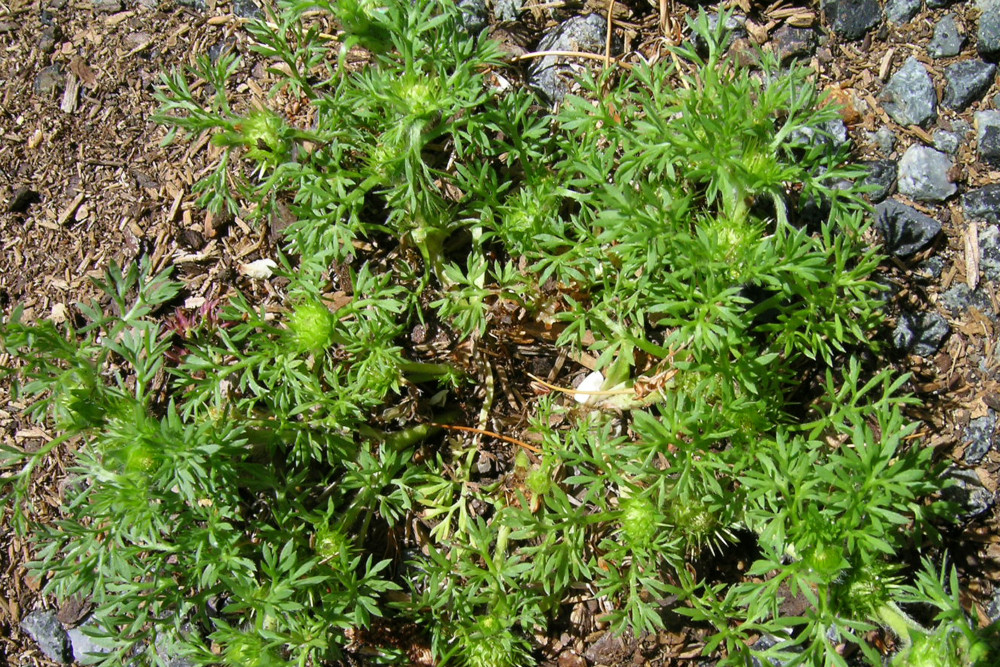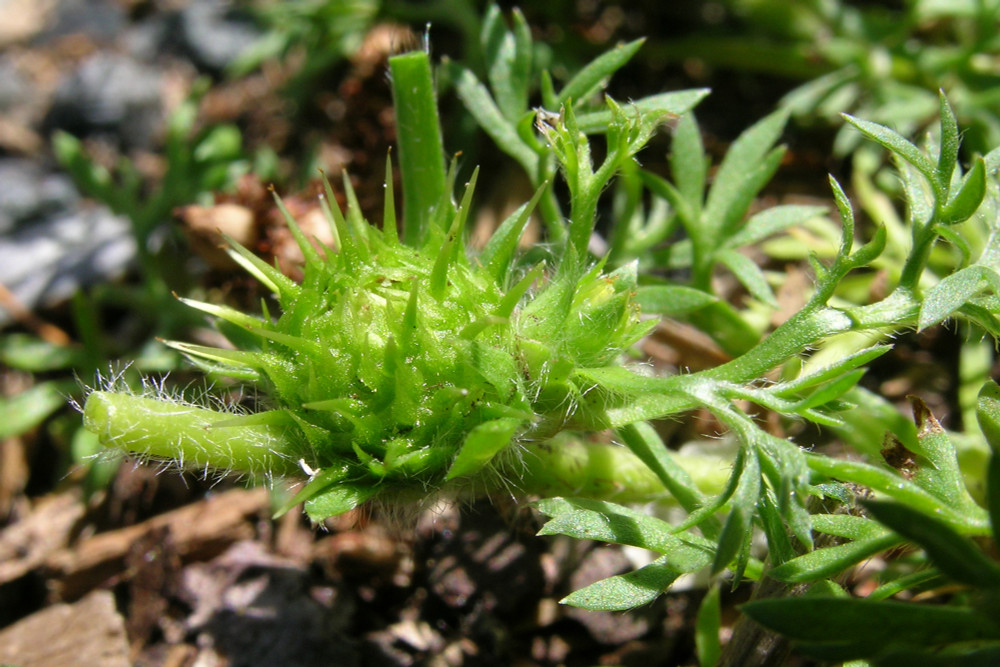
Bindii
Botanical name: Soliva sessilis
Common Names
Also known as: bindii, bindy-eye, carpet burweed, common soliva, field burweed, field soliva, jo jo, jo jo weed, jo-jo, sandbur , lawn burrweed , jo-jo weedlawn burweed, soliva, onehunga weed
Bindii Description
A small, short-lived (i.e. annual), herbaceous plant that develops a rosette of leaves at first, followed by a number of creeping (i.e. prostrate) stems up to 8 cm long. Shoots are produced from the these stems which develop into rosettes and so on, with plants eventually forming a low ground cover.
STEM AND LEAVES
The stems are green and softly hairy (i.e. pilose). The leaves are borne on stalks (i.e. petioles) up to 2 cm long and have deeply divided (i.e. bipinnatisect) leaf blades. These relatively small leaf blades (1-2 cm long and 6-10 mm wide) are covered in soft hairs (i.e. pilose). The first leaves are arranged in a rosette, while leaves are also alternately arranged along the stems.
FLOWERS AND FRUITS
The flower-heads (i.e. capitula) are roughly hemispherical in shape, and 3-5 mm across when the 'seeds' are mature. The flowering season is mainly during autumn and winter. The flattened 'seeds' (i..e. achenes or cypselae) are about 3 mm long with a two-lobed wing along either side and two spines at one end, one of which is especially sharp. The fruit usually mature in spring and summer.
REPRODUCTION AND DISPERSAL
This species reproduces by seed and stolons.
SIMILAR SPECIES
Bindy eye (Soliva sessilis) is very similar to dwarf jo jo weed (Soliva anthemifolia), and often grows in the same sorts of habitats. These two species can be distinguished by the following differences: bindy eye (Soliva sessilis) is a hairless or sparsely hairy plant that often produces creeping or semi-creeping stems (8 cm or more long). Its small flower-heads (3-5 mm across) may be borne near ground level or in the leaf forks of its stems and its small 'seeds' are topped with a sharp, rigid, spine dwarf jo jo weed (Soliva anthemifolia) is a softly hairy plant that occasionally produces short creeping stems (less than 5 cm long). Its relatively large flower-heads (5-12 mm across) are always borne near ground level and its small 'seeds' are topped with a soft, blunt, spine. When young, bindy eye (Soliva sessilis) can also be confused with common cotula (Cotula australis) and bittercress (Lepidium didymum), as all these species form a basal rosette of highly divided leaves at first. Older plants can be easily distinguished because bindy eye (Soliva sessilis) develops sharply-spined fruit in dense clusters near ground level, while bittercress (Lepidium didymum) produces shortly-stalked two-lobed fruit in elongated clusters and common cotula (Cotula australis) produces small flower-heads borne on upright stalks above its foliage.
Reference: https://weeds.brisbane.qld.gov.au/

